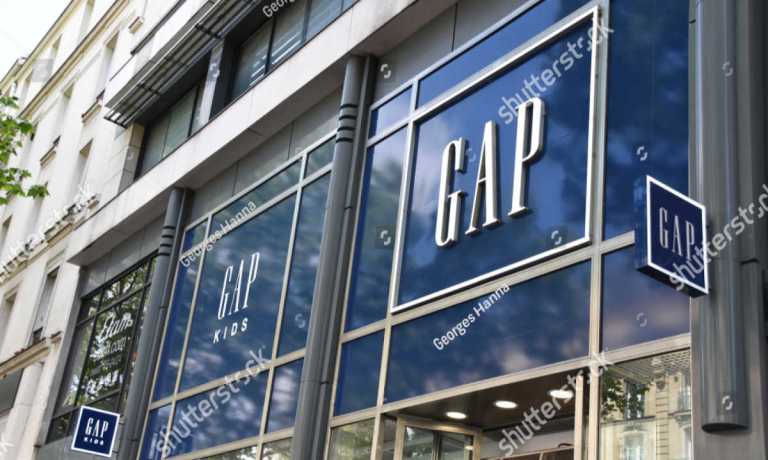Gap Pivots From C-Suite Shake-up to ‘Shock Drops’ for Yeezy

In 1937, the “world’s greatest salesman,” Elmer Wheeler, shot to fame and fortune with a marketing book and quip “Don’t Sell the Steak — Sell the Sizzle.”
Eighty-five years later, it appears that the nation’s largest — but most beleaguered — apparel retailer has taken a page from that book, with a week of bizarre promotional events surrounding the latest drops of its recently elongated brand, Yeezy Gap engineered by Balenciaga.
It started with a redesigned store in Times Square that included industrial sandbags filled with limited edition garments, which was followed shortly thereafter by interspersed social media updates surrounding a fleet of black vans with dove logos doing so-called “shock drops” via a small army of masked and hooded models delivering products in dumpsters at select locations.
For those unlucky consumers who were following this unfolding viral drama but unable to get to one of the 45 locations, the retailer’s designated webpage was refreshed to include the latest garb to facilitate online orders for those so inclined.
Unsurprisingly, the entire spectacle was closely chronicled and shared by numerous fashion, streetwear and trendy social blogs, a reality that all but ensured high public interest would collide with limited supply once again, a combination that enables unrealistic pricing.
Tough Time to Sell $240 Hoodies
As much as some individuals publicly boasted about their success and happiness in making a Yeezy purchase of the new Dove line, many of these buyers appeared to be little more than investors who have no intention of actually wearing what they bought.
For example, a year after the Yeezy Gap’s original $200 blue puffer jacket dropped, it’s still being resold online for three to four times that amount.
Read more: Gap-Yeezy Deal Reaps Instant Traffic Surge For 50-Year-Old Retailer
There’s also the reality that a growing number of individuals and households are being impacted by the spell of record inflation sweeping the country and the world right now, where PYMNTS data shows nearly two-thirds of United States consumers are currently living paycheck to paycheck.
See more: Two-Thirds of Paycheck-to-Paycheck Consumers Faced Financial Disruption in Last 36 Months

Whereas Yeezy Gap’s new Dove hoodie (pictured here) retails for $240, or a logo tee shirt sells for $140, equivalent garments can be easily attained at dozens of other retailers — including the Gap itself — for one-tenth the price.
For now, this 2-year-old design joint venture that’s slated to run for a decade is more than paying for itself in the form of buzz and hype it is creating.
Change the Narrative
While it remains to be seen if the retailer’s counter-cyclical surge in apparel demand, as well its elevated price points, will be sustainable, in the near-term the trend is surely a welcome relief and changed narrative for the 50-year-old San Francisco-based operator of a half dozen brands.
It is particularly noteworthy since the whirlwind Yeezy Gap weekend comes just three weeks after Gap replaced former CEO Sonia Syngal, and three months after the long-standing head of its largest brand, Old Navy, was shown the door in April.
Read more: Gap CEO Sonia Syngal Steps Down, Horacio Barbeito Named President and CEO of Old Navy
See more: Gap Nears 2-Year Low After Old Navy Shake-up, Deflated Forecast
It would seem that investors have taken notice — at least in the short term — as shares of Gap have bounced over 15% in the past two weeks, after having fallen nearly 70% over the past year.
If nothing else, the boost of business not only suggests that further changes are likely to follow suit at the corporate and store level, but that additional “shock drops” and similar viral promotions will also be coming — albeit at a leisurely pace that keeps scarcity and pricing intact yet still enables Gap to continue to sell the sizzle.
So far, investors appear to have taken notice — at least in the short-term — as shares of Gap have bounced over 15% in the past two weeks, after having fallen nearly 70% over the past year.